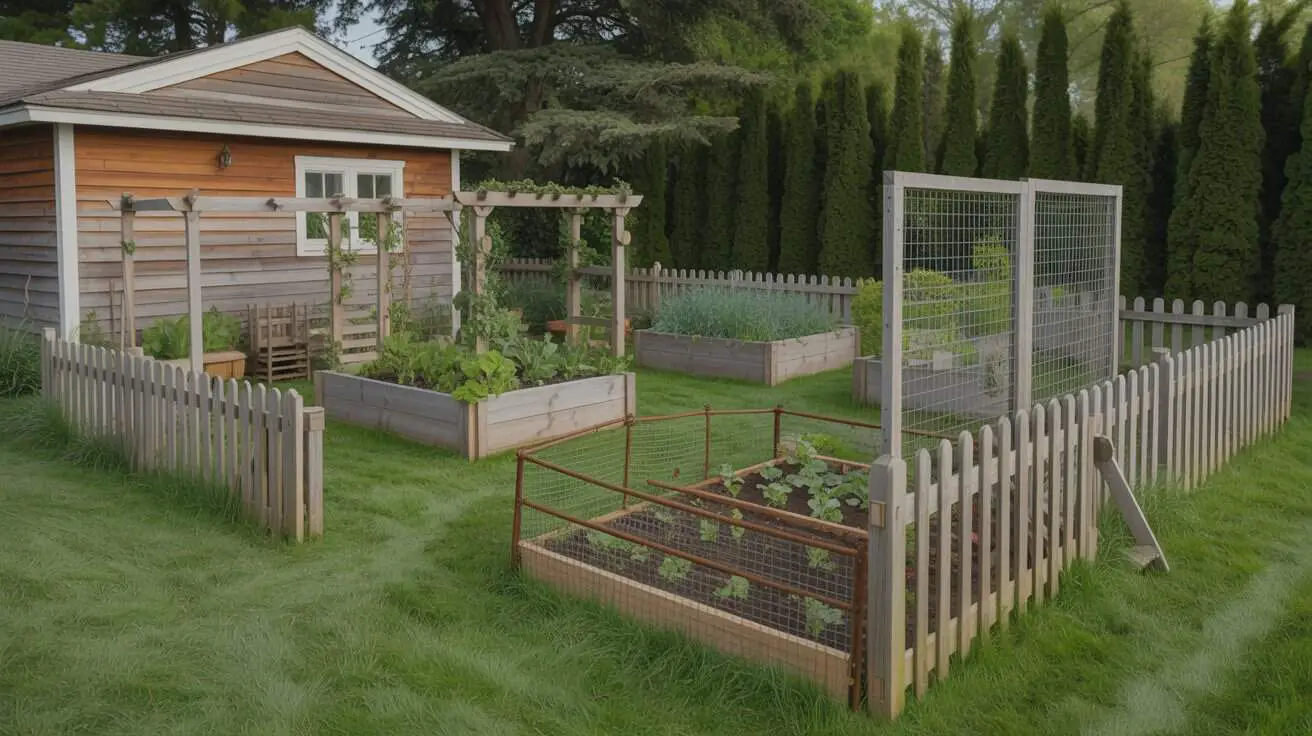
So you spent all that time planting your cute little garden—maybe some leafy greens, maybe a few zinnias—and what happens? Your dog digs up the lettuce, a neighbourhood cat decides to nap in the mulch, and something (squirrel? raccoon? secret ninja rabbit?) eats every single tomato the night before they’re ripe. Love that for us.
It’s a weird thing, right? We want a yard that feels like a slice of nature, but then we have to protect it from… nature. Or at least from pets with too much energy and wildlife with zero chill.
I’ve definitely had my fair share of backyard fails (shoutout to the time I tried to use bamboo stakes and string as a “fence”), but the good news is, you don’t have to give up the dream of a lush, family-friendly yard just because it’s also home to a very enthusiastic golden retriever—or curious squirrels with personal vendettas.
This article is all about realistic, lovely, and actually-doable ideas for animal proofing your garden and yard—without turning it into a cage. These designs are pet-safe, family-friendly, and still feel like a home, not a fortress.
Let’s start with the ground and work our way up.
Raised Garden Beds with Built-In Fencing
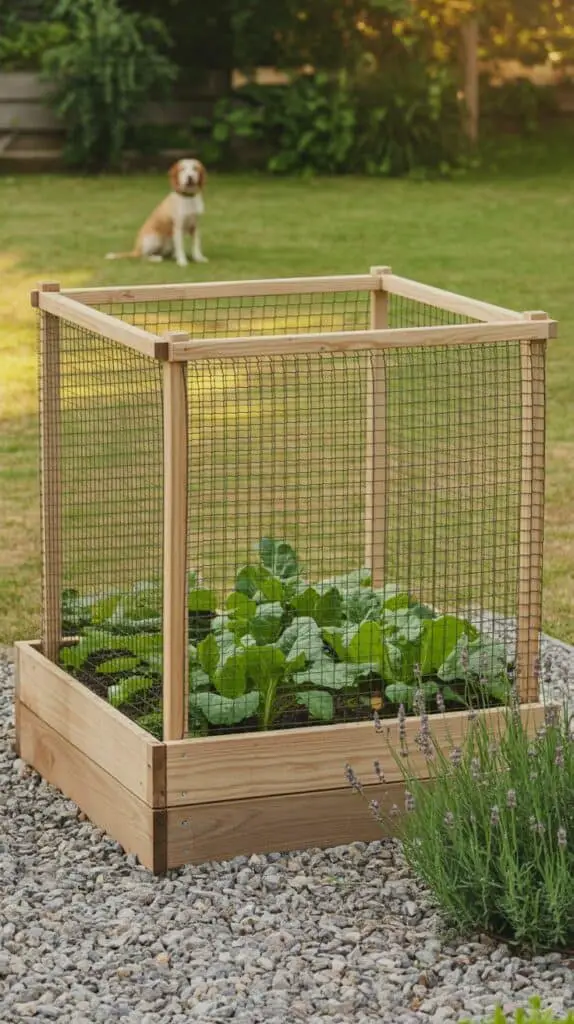
If you’ve got dogs, rabbits, or even just free-range toddlers, regular in-ground gardens don’t always stand a chance. A simple way to start protecting your veggies (without giving up aesthetics) is by upgrading to raised garden beds with fencing already built in.
Here’s how it works:
You start with a basic wooden raised bed, around 2–3 feet high. Then attach a lightweight fence frame directly to the outer edges. You can use cedar, pine, or even metal corner brackets, and stretch wire mesh or chicken wire across the panels. Add a hinged gate on one side for easy access—nothing fancy.
These raised beds not only stop your dog from “helping” with the digging, but they also help prevent bunnies, raccoons, and even squirrels from hopping in. Plus, higher beds make gardening easier on your back (and knees), which is a win if you’re out there every evening after dinner.
Want to make it cuter? Paint the wood a soft sage or leave it natural and weathered. Plant some flowers around the base—calendula, marigolds, or nasturtiums work great—and suddenly your protected garden bed becomes a design feature instead of a barrier.
Use Gravel or Mulch Paths as Soft Animal Boundaries
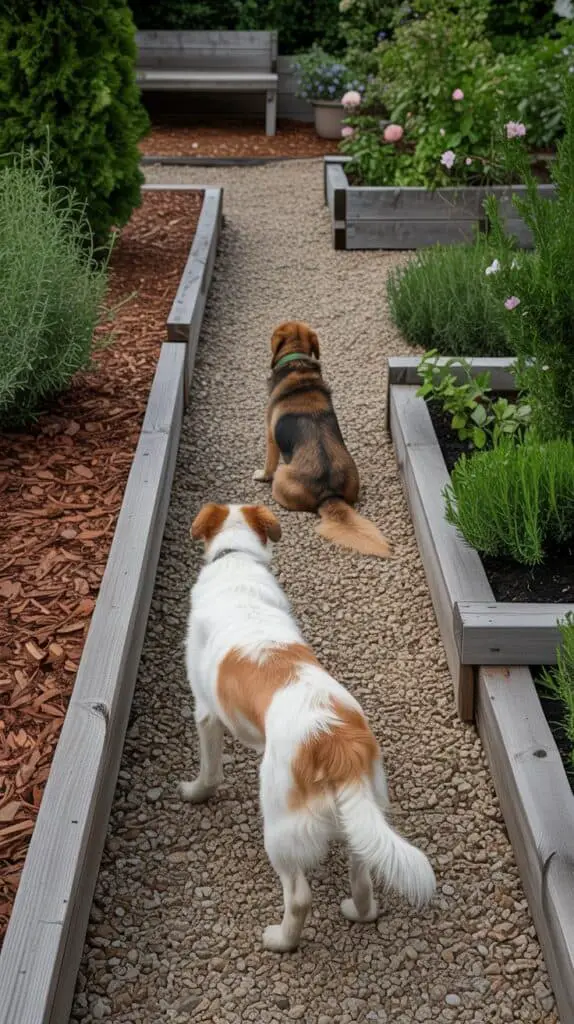
Sometimes it’s not about blocking animals—it’s about redirecting them. Dogs, especially, tend to create natural paths in the yard, and rather than fight it, it’s often smarter to lean into it.
Try laying down gravel or bark mulch paths that guide pets away from your garden zones. These soft boundaries make it clear where feet should go (and where they shouldn’t). You can even edge these paths with low wood beams, pavers, or bricks for definition.
For extra protection, place your raised beds or veggie patches just beyond the paths and surround them with something prickly or uninviting for paws—rosemary bushes, lavender, or thornless roses. These plants add height and scent while gently discouraging trampling.
It’s all about nudging your animals into their own rhythm. Add a bench or water bowl at the end of the path and suddenly you’ve built your pet a mini “destination.” They’ll leave your salad greens alone if they’ve got their own corner to sniff and chill.
Try Covered Garden Beds for Delicate Veggies
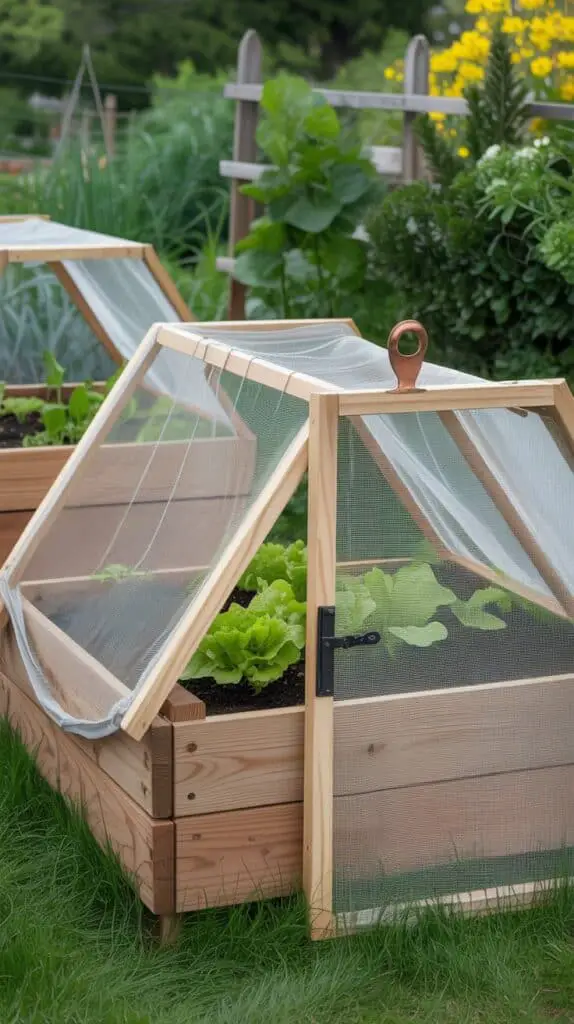
If squirrels, birds, or cats have turned your vegetable patch into their personal buffet/lounge area, consider adding a cover to your garden beds. This doesn’t mean wrapping everything in netting like it’s a fruit tree at war—it can actually be stylish, structured, and totally backyard-friendly.
One easy approach is a hinged wood-frame cover built to fit over your raised beds. Think of it like a shallow lid or mini cold frame, made with mesh, chicken wire, or clear polycarbonate. It lifts open for watering and planting, but stays closed the rest of the time to keep things safe.
Covered beds are especially useful for:
- Seedlings (no more mystery paw prints)
- Lettuce and leafy greens (squirrel magnet)
- Carrots and radishes (dug up way too often)
You can build one with simple tools or order a pre-made cover and customize it to match your garden design. Paint it white, add a copper handle—go cute with it! These covers make your garden look intentional, not just reactionary.
Design a Pet-Friendly Zone Away from the Garden
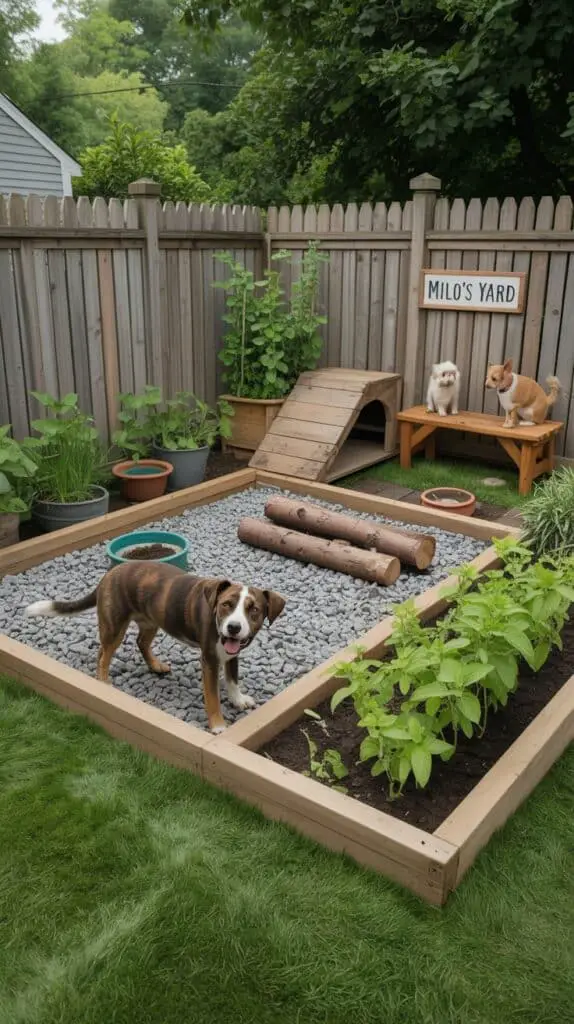
Let’s be real—sometimes the only way to save your garden is to give your animals something better. If you’ve got the space, design a dedicated dog zone or pet garden that’s way more fun than your raised bed setup.
Include features like:
- A gravel digging pit (yes, give them a spot to go wild)
- Shade trees and water bowls
- A low agility tunnel or log pile
- Open grassy space for zoomies
Then fence this section in with low wood or decorative iron fencing—just tall enough to signal the boundary. Add a gate, maybe a cute sign (“Milo’s Yard”), and suddenly your pet has their own garden within the garden.
This isn’t just for dogs. Cats love a sunny bench next to a mint patch. Rabbits? They’ll hang out forever in a secure pen surrounded by clover and basil.
Giving your pets their own hangout keeps them busy—and less interested in your garden beds.
Use Fencing Strategically (Not Everywhere)
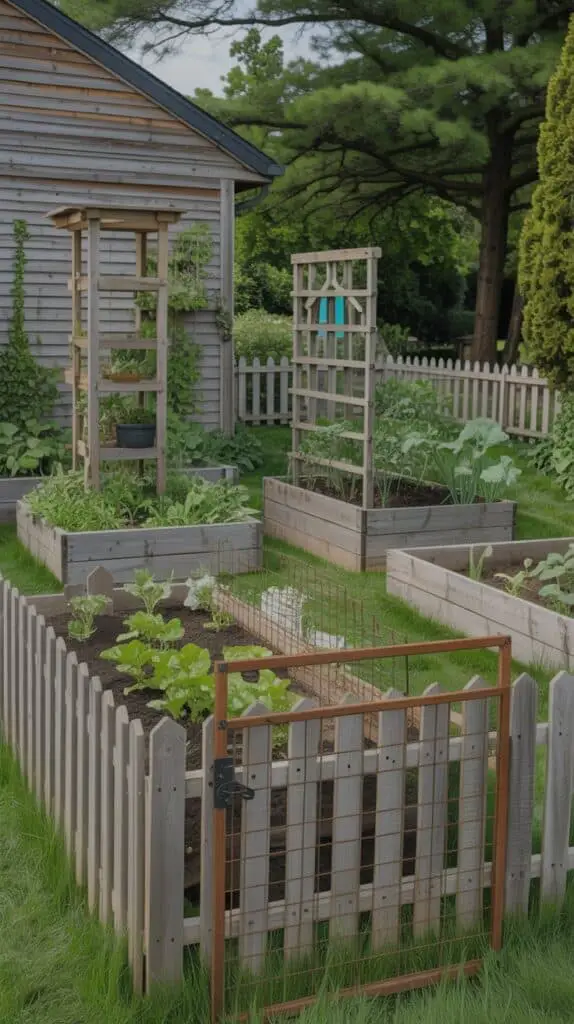
You don’t need to fence the whole yard to keep animals out of your garden—you just need to be smart about it. The goal is to create visual (and actual) barriers that say “this is off-limits” without closing off your space completely.
Some easy fencing ideas that don’t take over your yard:
- Low wood or metal fencing (18–24 inches) just around garden beds
- Decorative arbors or trellises with climbing plants to frame veggie zones
- Removable panel fencing (great if your dog’s only wild during zoomie hour)
- Rustic cattle panels or wire grids attached to raised beds
You can even fence within a bed—using vertical garden dividers or chicken wire hoops just around newly planted sections. It’s subtle, and it keeps paws and pawsome curiosity in check.
Match your materials to your garden vibe—weathered wood for a rustic look, black powder-coated metal for a clean modern feel, or whitewashed pickets for a cottage-style yard. This keeps the space looking cohesive while protecting your precious greens.
Final Thoughts
Animal-proofing your family yard doesn’t mean turning it into a fortress—or sacrificing every cute idea you’ve saved on Pinterest. It just means getting a little smarter with your layout, planting, and fencing choices so your garden and your animals can both thrive (and ideally not destroy each other).
Whether you’re dealing with a dig-happy dog, a veggie-stealing squirrel, or just trying to keep your cat from turning your herb bed into a nap zone, there’s always a way to work with your space, not against it. Start small—one raised bed, one flower-lined path, one little dog corner—and see how it feels. You don’t need a perfect setup overnight.
Honestly, the best backyards are the ones that feel lived in. A little bit wild, a little bit intentional. Some flowers for you, some dirt for the pets, and a veggie patch that might not be flawless—but mostly makes it through the season.
And if a tomato or two gets stolen? That’s just part of the story.
